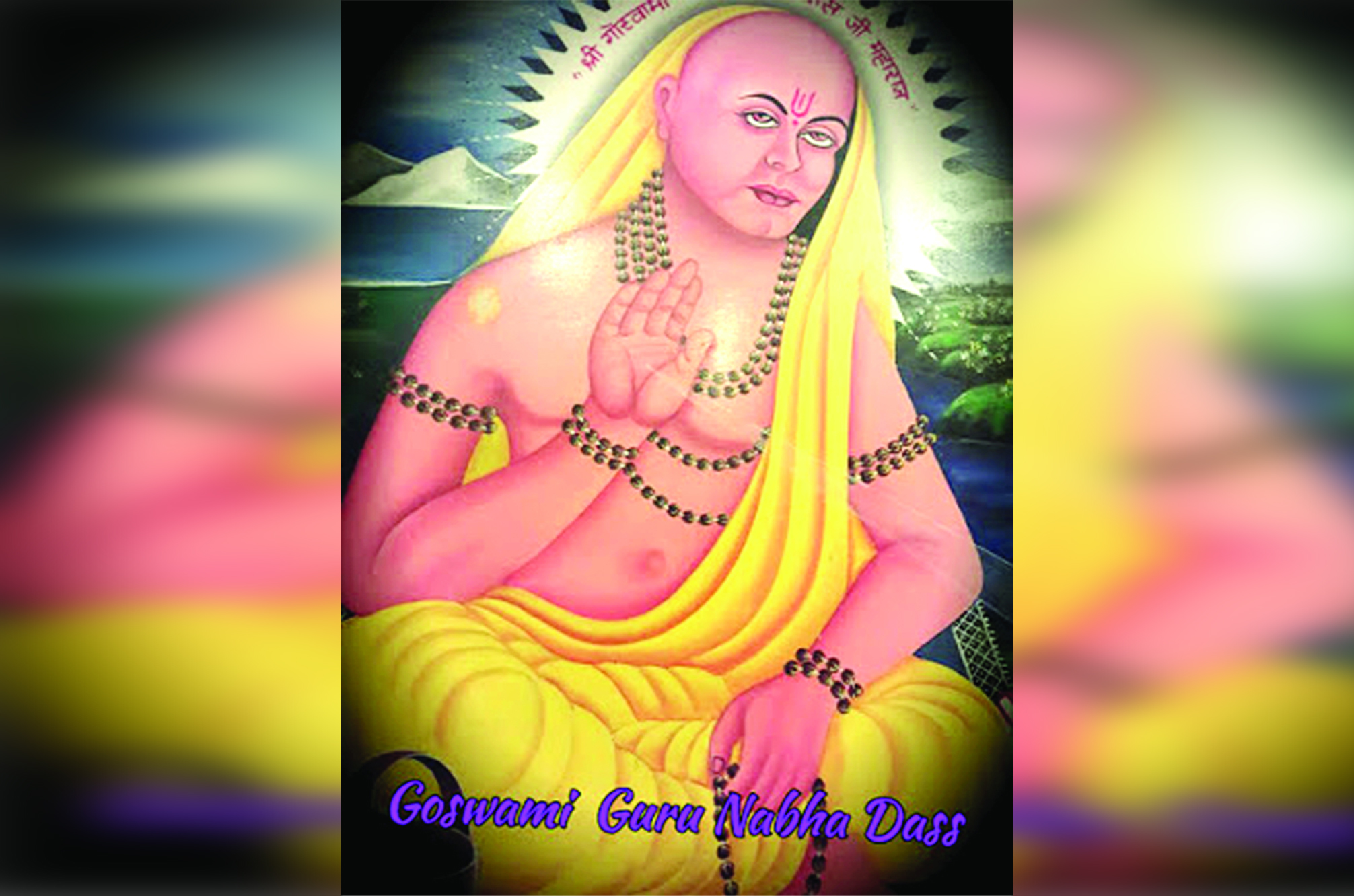Ankush Kumar
Guru Nabhadas was a theologian, saint and the most important author of the renowned text Bhaktamal. Guru Nabhadas wrote the history in this sacred text of almost every era from Satya Yuga to Kali Yuga age. On the occasion of his birthday anniversary every year, millions of his devotees celebrate and remember his teachings and vision of an inclusive society.
Pratap Singh and Grierson retreat tothe birthplace and origin of the Guru Nabhadas, from the southern part of India. Some other scholars believe that Guru Nabhadas was born on “April 8, 1537, at village Bhadrachalam on the bank of the Godavari river in Khammam district of Telangana state in India” His father’s name was Ramdass ji, and his mother’s name was Janaki Devi, now known as Ramdassu. Mahasha, Doom, Dumna communities are the followers and devotees of Guru Nabhadas, now known as Nabhadassia.
Guru Nabhadas: Supra-Inclusive Community:
The Bhaktmal text written by Guru Nabhadas represents a different type of inclusive community. This community is not based on social status, sects of any society, gender, caste, or time or space. It provides space to every person in this community. The date of Bhaktmal is approximately between 1585 to 1623. J.P Hare argues that even the starting verse of the bhaktmal text reflects no difference between the ‘bhagvan and bhakti, God and guru, devotee and devotion’. Near about 800 bhaktas have been mentioned in the bhaktmal text. Regardless of the diversity, every individual can contribute to Bhakti. Guru Nabhadas explained human society could develop by Bhakti. Pinch referred to the Priyadas and said that the Nabhadas did not enjoy the Sadhu status, and he was just bhakat in the Ashram, and his duty was to serve the sadhu, and this is an essential aspect to understand the ‘Bhaktmal’. Nabhadas imagined Sampraday, beyond the restraints of caste, social status, sect, religion and where caste does not apply.
J.P Hare states that Guru Nabhadas admired the examples of devotion, and by doing this, he imagined a community described by its collective obligation to Bhakti. Guru Nabhadas explained the Bhakti in ‘Vaishnava’ footings beyond the static religious categories. Caste does not play any role in the Guru Nabhadas bhakti, but Guru is the central figure in Bhakti. The relation of the Guru and Disciple in the ‘Sampraday’ is one of the defining criteria of the bhakti community. He even argued that Bhakti is the foundation for just human society.
Pinch mentions that Guru Nabhadas imagined the inclusive society as “Vaisnava Catholicism”,in which the saints and bhaktas will remain the essential part. Guru Nabhadas provides equal space to men and women, both subordinate and dominant castes. Pinch contends that Nabhadas try to form the supra-sectarian organisation which can accommodate every type of individual in the particular ‘Sampradya’.’ Jha argues that by mentioning Kabir in his text, Guru Nabhadas surpasses the rigid categories of religion. Guru Nabha’s text is proof of impartiality; he considers the space of love for all. Nabhadas put the focus on Kabir’s humility and persistence. The inclusion of Kabir reflects his vision of bhakats and devotion.
Nabhadas imagine a broad-based community that unites by Bhakti. Bhakti is the foundation of the community; it reflects the community’s vision, which is beyond any particular Caste. The exceptionality of the Bhaktmal text lies in its inclusive nature, this text is not only a composition of hagiographies, but it represents a unified vision of community.
Trending Now
E-Paper


